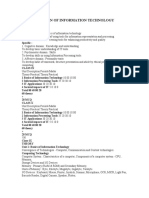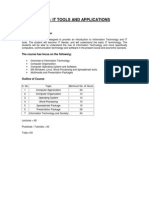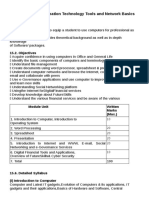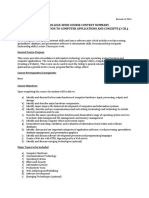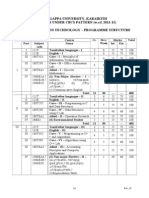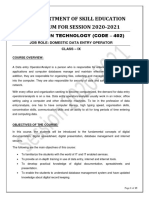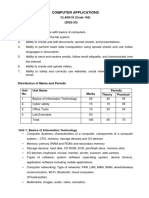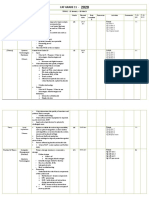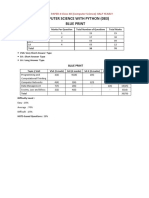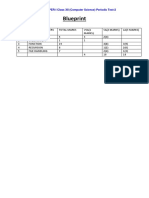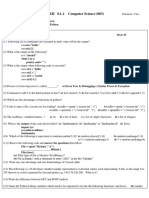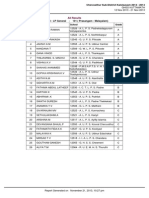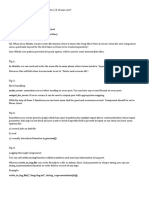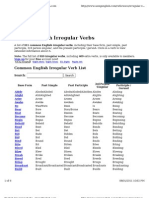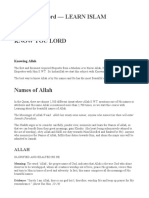0% found this document useful (0 votes)
31 views12 pagesClassIX Term2Syllabus
The document outlines the CBSE CCE Syllabus for Class IX in Foundation of Information Technology for the academic year 2011-2012. It details the learning objectives, assessment structure, and course content divided into two terms, covering topics such as basics of information technology, information processing tools, IT applications, and societal impacts of IT. The syllabus emphasizes hands-on experience and practical skills in various IT tools and applications.
Uploaded by
ekta shroffCopyright
© © All Rights Reserved
We take content rights seriously. If you suspect this is your content, claim it here.
Available Formats
Download as DOC, PDF, TXT or read online on Scribd
0% found this document useful (0 votes)
31 views12 pagesClassIX Term2Syllabus
The document outlines the CBSE CCE Syllabus for Class IX in Foundation of Information Technology for the academic year 2011-2012. It details the learning objectives, assessment structure, and course content divided into two terms, covering topics such as basics of information technology, information processing tools, IT applications, and societal impacts of IT. The syllabus emphasizes hands-on experience and practical skills in various IT tools and applications.
Uploaded by
ekta shroffCopyright
© © All Rights Reserved
We take content rights seriously. If you suspect this is your content, claim it here.
Available Formats
Download as DOC, PDF, TXT or read online on Scribd
/ 12

